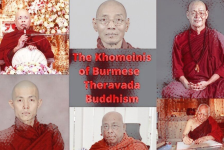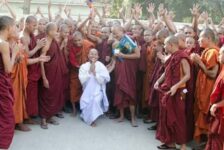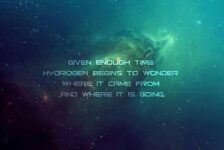Introduction
This review begins with a confession: I recently had a transcendent experience. In its aftermath, I turned to The Tao of Physics by Fritjof Capra, curious whether his insights might resonate with mine. To my delight—or cosmic coincidence?— the forthcoming 50th anniversary edition is set for release on July 1 and Shambhala Publishers was kind enough to send me an advance review copy for Atheist Alliance International. I read it through the lens of that shared insight, focusing on Capra’s exploration of how quantum physics offers tantalizing clues behind the recurring, cross-cultural nature of transcendent experiences.
As it turns out, what I encountered was uncannily similar to what Capra describes in his original preface:
. . . I suddenly became aware of my whole environment as being engaged in a gigantic cosmic dance. . . . I “saw” cascades of energy coming down from outer space, in which particles were created and destroyed in rhythmic pulses; I “saw” the atoms of the elements and those of my body participating in this cosmic dance of energy; I felt its rhythm and I “heard” its sound, and at that moment I knew that this was the Dance of Shiva . . . (xvii)
Capra refers to transcendence as a religious experience:
. . . it is important to realize that they are religious in essence. Their main aim is the direct mystical experience of reality, and since this experience is religious by nature, they are inseparable from religion. (67)
Though, in his postscript, Capra draws a crucial distinction between spirituality[1] and religion—two terms often conflated, but fundamentally different. It’s easy to see how a profound spiritual experience might register as religious to someone inclined that way. But for me, it was nothing of the sort—unsurprising, given my non-belief and that this review is for AAI. Still, the experience aligned with countless descriptions of transcendence: a sense of oneness with the universe. At its core, though, my experience was decisively more Sagan than Swaggart.* That’s why I approach this review from a humanist perspective, and why I avoid the term mystical with all its supernatural baggage. What I experienced was an elevated state of consciousness—as if a third eye had opened—not religious, but expansive. If it parallels string theory, it was like catching a resonance an octave higher.
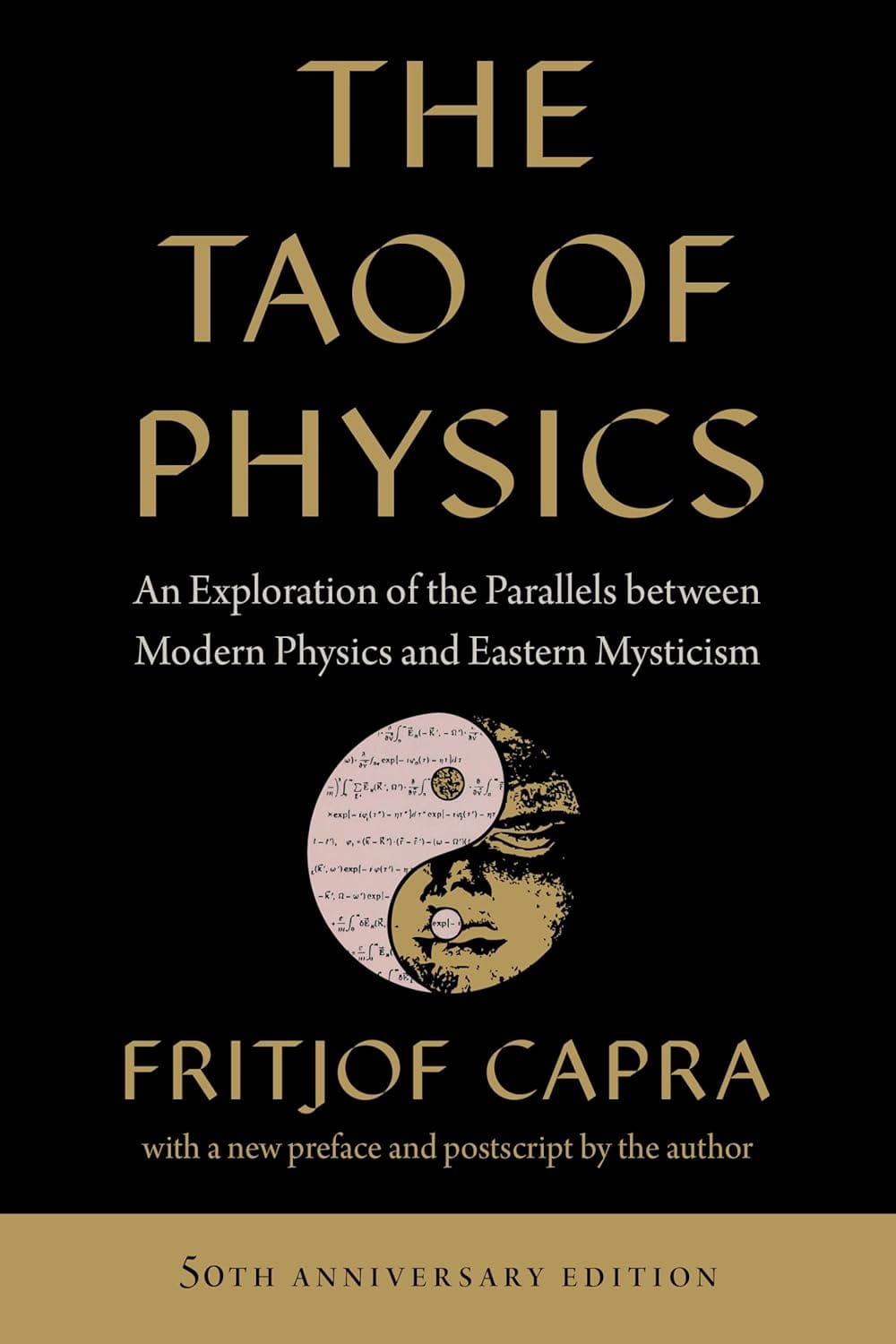
Overview
The Tao of Physics is a book for the intellectually curious—for those drawn to the revolutionary insights of quantum physics, the cross-cultural patterns of mystical experience, and the striking parallels found in key schools of Buddhism, Hinduism, and Daoism.
In the early chapters, Capra offers a clear and thorough overview of modern scientific history, showing how the discovery of the quantum realm forced physicists to reconsider the paradoxical nature of reality. Part I, The Way of Physics, sets the stage with this historical context. In Part II, The Way of Eastern Mysticism, Capra shifts focus to the major Asian philosophical traditions and their approaches to transcendence. Part III, The Parallels, dives deeper into quantum theory—territory that may exceed the comfort zone of lay readers more interested in the spiritual connections, but which offers a rich foundation for scientifically inclined readers. The book serves as a crash course in particle physics and quantum field theory—not for everyone, but essential for understanding the broader implications. Capra then draws compelling connections between the discoveries of modern physics and the insights long articulated by Eastern mystics about the fundamental nature of the universe.
The most relatable example of Asian philosophical intuition regarding ‘The Tao of Physics’ is Capra’s summation of ch’i:
In Chinese philosophy, the [quantum] field idea is not only implicit in the notion of the Tao as being empty and formless, and yet producing all forms, but is also expressed explicitly in the concept of ch’i. . . .
. . . As Chang Tsai says again,
The Great Void cannot but consist of ch’i; this ch’i cannot but condense to form all things; and these things cannot but become dispersed so as to form (once more) the Great Void. (195)
Here then, is the closest parallel to the Void of Eastern mysticism in modern physics. Like the Eastern Void, the physical vacuum—as it is called in field theory—is not a state of mere nothingness but contains the potentiality for all forms of the particle world. These forms, in turn, are not independent physical entities but merely transient manifestations of the underlying Void.
The relation between the virtual particles and the vacuum is an essentially dynamic relation; the vacuum is truly a “living Void,” pulsating in endless rhythms of creation and destruction. The discovery of the dynamic quality of the vacuum is seen by many physicists as one of the most important findings of modern physics. From its role as an empty container of the physical phenomena, the void has emerged as a dynamic quantity of utmost importance. The results of modern physics thus seem to confirm the words of the Chinese sage Chang Tsai:
When one knows that the Great Void is full of ch’i, one realises that there is no such thing as nothingness. (204)
Capra notes that Asian philosophies have long emphasized the ineffability of transcendent experience, with sages relying on metaphor and myth to express what words cannot fully capture.
Whenever the Eastern mystics express their knowledge in words—be it with the help of myths, symbols, poetic images, or paradoxical statements—they are well aware of the limitations imposed by language and “linear” thinking. Modern physics has come to take exactly the same attitude with regard to its verbal models and theories. They, too, are only approximate and necessarily inaccurate. They are the counterparts of the Eastern myths, symbols, and poetic images, and it is at this level that I shall draw the parallels. The same idea about matter is conveyed, for example, to the Hindu by the cosmic dance of the god Shiva as to the physicist by certain aspects of quantum field theory. Both the dancing god and the physical theory are creations of the mind: models to describe their authors’ intuition of reality. (28)
Despite the common claim that transcendent insight defies expression, Capra manages to articulate his experience clearly in the preface. I would argue that the intuitive grasp of the universe reported by mystics across cultures was often genuine—but their inability to convey it stemmed from a lack of scientific language, particularly the framework of quantum mechanics. Capra’s ability to describe his experience through modern physics challenges the idea that such insights are inherently inexpressible.
That said, he rightly notes that intellectual description is not the same as the direct, intuitive understanding gained through a transcendent experience:
Buddhists insist that the concept of interpenetration is not comprehensible intellectually but is to be experienced by an enlightened mind in the state of meditation. (278-79)
The relation of this knowledge to modern physics is but one of its many aspects and, like all the others, it cannot be demonstrated conclusively but has to be experienced in a direct intuitive way. . . . (285)
. . . For those who have experienced this harmony, the significance of the parallels between the worldviews of physicists and mystics is beyond any doubt. The interesting question, then, is not whether these parallels exist, but why; and, furthermore, what their existence implies.
Capra also notes that many Asian traditions emphasize the years of disciplined practice monks undergo to attain enlightenment. Yet both he and I experienced transcendent insight spontaneously—without formal guidance or deliberate meditation. That said, this doesn’t discount the life paths and accumulated experiences that likely primed our minds for such moments. The insight arose unbidden, but not without context.
Our shared experience also challenges the notion that transcendent states can only be reached through years of structured training and meditation. This underscores my humanist perspective: such experiences are not inherently religious but rather arise from heightened states of consciousness free of any theological framing. This view aligns with the premise of Professor Brook Ziporyn’s Experiments in Mystical Atheism: Godless Epiphanies from Daoism to Spinoza and Beyond.
At the book’s end, Capra evokes experiences of higher consciousness in a way that echoes Carl Sagan’s famous line from Cosmos (1980): “We are a way for the cosmos to know itself.”
This view, again, is in perfect harmony with the views of the Eastern mystical traditions which have always regarded consciousness as an integral part of the universe. In the Eastern view, human beings, like all other life forms, are parts of an inseparable organic whole. Their intelligence, therefore, implies that the whole, too, is intelligent. Man is seen as the living proof of cosmic intelligence; in us, the universe repeats over and over again its ability to produce forms through which it becomes consciously aware of itself. (282)
Within this sense of universal interconnectedness, the familiar maxim from The Three Musketeers—“All for one, and one for all”—takes on a deeper, more profound meaning. That people across cultures and millennia report strikingly similar transcendent experiences suggests something more than coincidence.* Is this universal insight merely an emergent property of human consciousness? Or, as Capra suggests, could it reflect the quantum nature of the universe itself, manifesting through the very structure of our neurobiology?
In the Afterword, Capra highlights scientific breakthroughs over the past fifty years that strengthen the connection between mystics’ intuitive insights and the universe’s fundamental nature—such as the 2022 Nobel Prize-winning evidence for quantum entanglement. He also eloquently reflects on the metaphorical significance of the Dancing Shiva statue at CERN (below), linking it to these quantum revelations:
Modern physics has thus revealed that every subatomic particle not only performs an energy dance but also is an energy dance; a pulsating process of creation and destruction. (227)
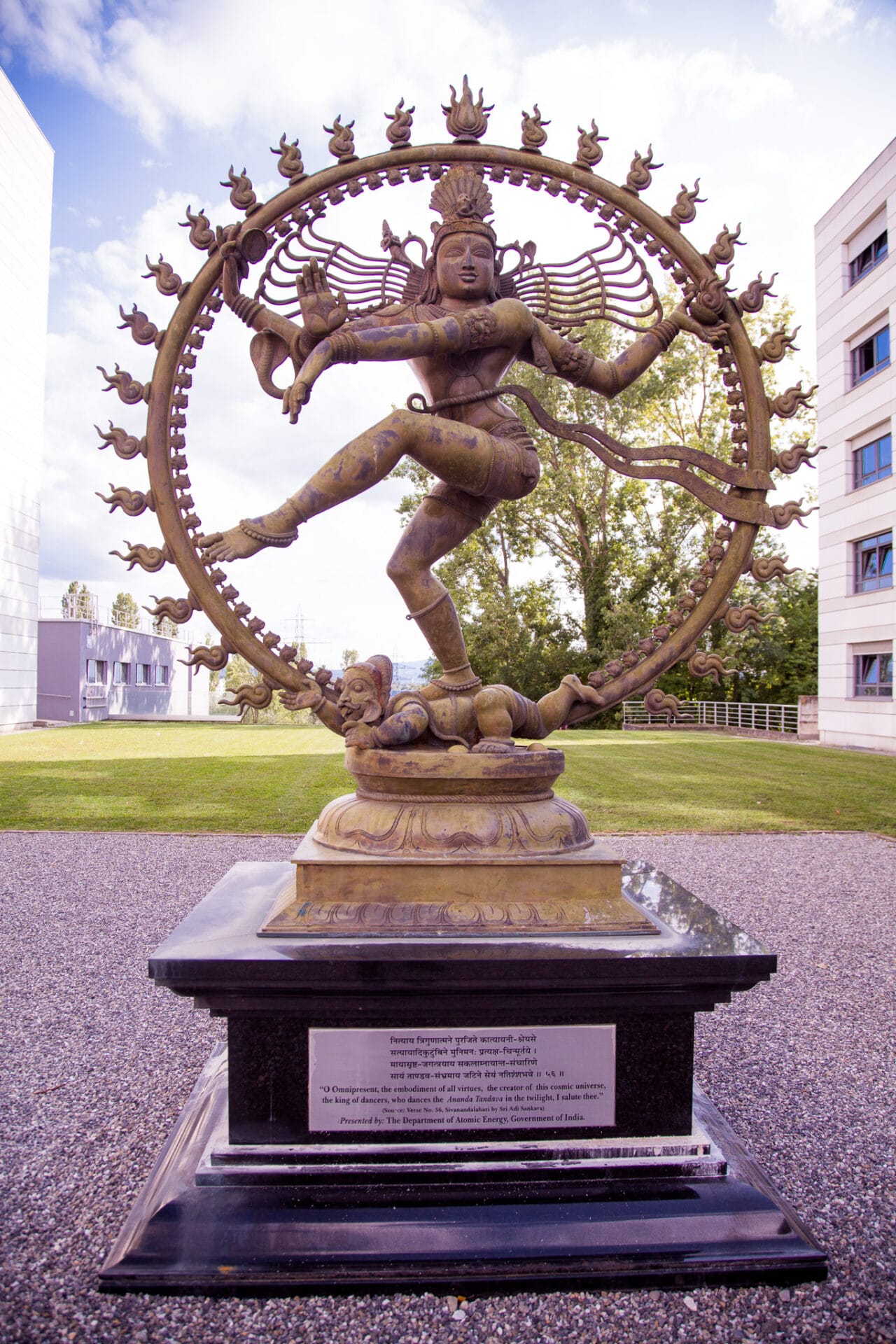
Source: Kenneth Lu, CC BY 2.0 <https://creativecommons.org/licenses/by/2.0>, via Wikimedia Commons
Clearly, something—neurochemical, psychological, or otherwise—is happening in the brains of those who have transcendent experiences. Yet, as Capra shows through multiple examples, quantum physics research is increasingly aligning with the models of reality that mystics have intuitively perceived for millennia. Ongoing investigations into both quantum phenomena and neurological responses promise to uncover even more fascinating insights in the years ahead.
* As Capra notes, those who experience transcendent epiphanies commonly feel a profound oneness with the universe, though the way this manifests is unique to the person. Capra envisioned “cascades of energy coming down.” For me, it was standing at the center of spacetime, witnessing countless multiverses simultaneously bursting into existence and expanding toward infinity. There was a sense of eternity—not just endless time, but timelessness with no beginning or end. The universe was continuously expanding, similar to observing boiling water as each new multiverse bubbled up in the cosmic dance of spacetime. From this infinite center, where billions of light-years stretch in every direction, I intuitively understood why the circle holds sacred power across cultures—and why the yin-yang imagery so perfectly embodies the balance of opposites.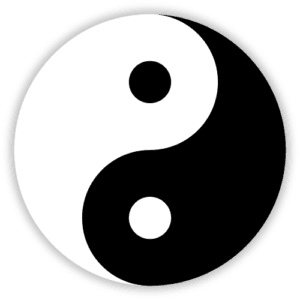 [1] For a proper understanding of spirituality, it is useful to begin with the root meaning of the word “spirit.” [my emphasis] The Latin spiritus means “breath”; and interestingly this is also true for the related Latin word anima, the Greek psyche, and the Sanskrit atman. The common meaning of these key terms indicates that the original meaning of spirit, and of soul, in many ancient philosophical and religious traditions, in the West as well as in the East, is that of the breath of life. (301)
[1] For a proper understanding of spirituality, it is useful to begin with the root meaning of the word “spirit.” [my emphasis] The Latin spiritus means “breath”; and interestingly this is also true for the related Latin word anima, the Greek psyche, and the Sanskrit atman. The common meaning of these key terms indicates that the original meaning of spirit, and of soul, in many ancient philosophical and religious traditions, in the West as well as in the East, is that of the breath of life. (301)
The central awareness in these spiritual moments is a profound sense of oneness with all, a sense of belonging to the universe as a whole. (302)


